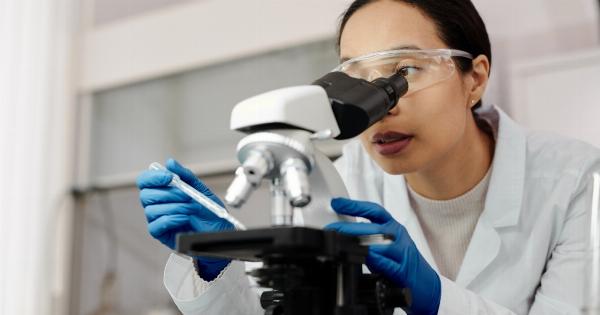Tuberculosis (TB) is a contagious bacterial infection that primarily affects the lungs but can also damage other organs in the body. It is caused by Mycobacterium tuberculosis, a bacteria spread through the air when an infected person coughs or sneezes.
According to the World Health Organization (WHO), TB is one of the top 10 leading causes of death worldwide, affecting millions of people every year.
Types of Tuberculosis
There are two main types of tuberculosis: latent TB infection and active TB disease. In latent TB infection, the bacteria remain in the body but are in an inactive state, causing no symptoms and not spreading to others.
However, the bacteria can become active at any time, leading to active TB disease. Active TB disease presents symptoms and can be contagious.
Signs and Symptoms
The signs and symptoms of TB can vary from person to person. Common symptoms include:.
- Chronic cough that lasts for more than three weeks
- Coughing up blood
- Chest pain or discomfort
- Unintentional weight loss
- Fever and night sweats
- Fatigue and weakness
- Loss of appetite
In some cases, TB can also affect other parts of the body, causing symptoms related to those organs. For example, TB in the bones can lead to joint pain, while TB in the brain can cause headaches and neurological problems.
Diagnosis
Diagnosing TB involves several steps, including:.
- Medical history and physical examination: A healthcare professional will ask about your symptoms, medical history, and perform a physical exam.
- Tuberculin skin test: This test involves injecting a small amount of purified protein derivative (PPD) solution into the skin to check for a reaction.
- Blood tests: Blood tests can be conducted to detect antibodies or other markers of TB infection.
- Chest X-ray: A chest X-ray can reveal any abnormalities in the lungs, such as inflammation or the presence of nodules.
- Sputum test: A sample of mucus from the lungs (sputum) is collected and examined under a microscope to check for the presence of TB bacteria.
Treatment and Prevention
TB can be treated effectively with appropriate medications. The most common treatment regimen for active TB disease involves a combination of antibiotics taken for several months.
It is crucial to follow the prescribed treatment regimen until completion to prevent the development of antibiotic-resistant strains of TB.
Preventing the spread of TB is also vital. Here are some preventive measures:.
- Ensure good ventilation in living spaces.
- Practice proper respiratory hygiene, such as covering your mouth and nose when coughing or sneezing.
- Use face masks when in close contact with individuals with known or suspected TB.
- Maintain a healthy immune system through regular exercise, balanced diet, and adequate sleep.
- The Bacillus Calmette-Guérin (BCG) vaccine can reduce the risk of developing TB, especially in children. However, its effectiveness varies and is not recommended for everyone.
TB and Drug Resistance
Drug resistance is a significant concern in TB treatment. When the bacteria responsible for TB become resistant to the drugs used to treat it, it is known as drug-resistant TB. This makes the disease more challenging to treat and control.
Drug-resistant TB requires specialized medications and longer treatment durations, which can have more side effects. It is essential to adhere to the prescribed treatment regimen to minimize the development of drug resistance.
TB Global Impact
Tuberculosis is a global health issue, affecting people in all parts of the world. It is more prevalent in low-income countries with limited access to healthcare resources, proper sanitation, and crowded living conditions.
Additionally, factors such as HIV infection, malnutrition, and smoking increase the risk of developing active TB disease.
Efforts to control and eradicate TB globally have been ongoing for many years. The WHO, along with other organizations, has implemented strategies to enhance TB detection, treatment, and prevention.
These include early diagnosis, effective treatments, and public health programs.
Conclusion
Tuberculosis continues to be a significant global health challenge, causing illness, death, and economic burden. It is crucial to raise awareness about the disease, its symptoms, and prevention methods.
Early detection and appropriate treatment can help prevent the spread of TB and reduce its impact on individuals and communities. Through collaborative efforts at the global and local levels, we can strive towards a world free from the burden of tuberculosis.





























